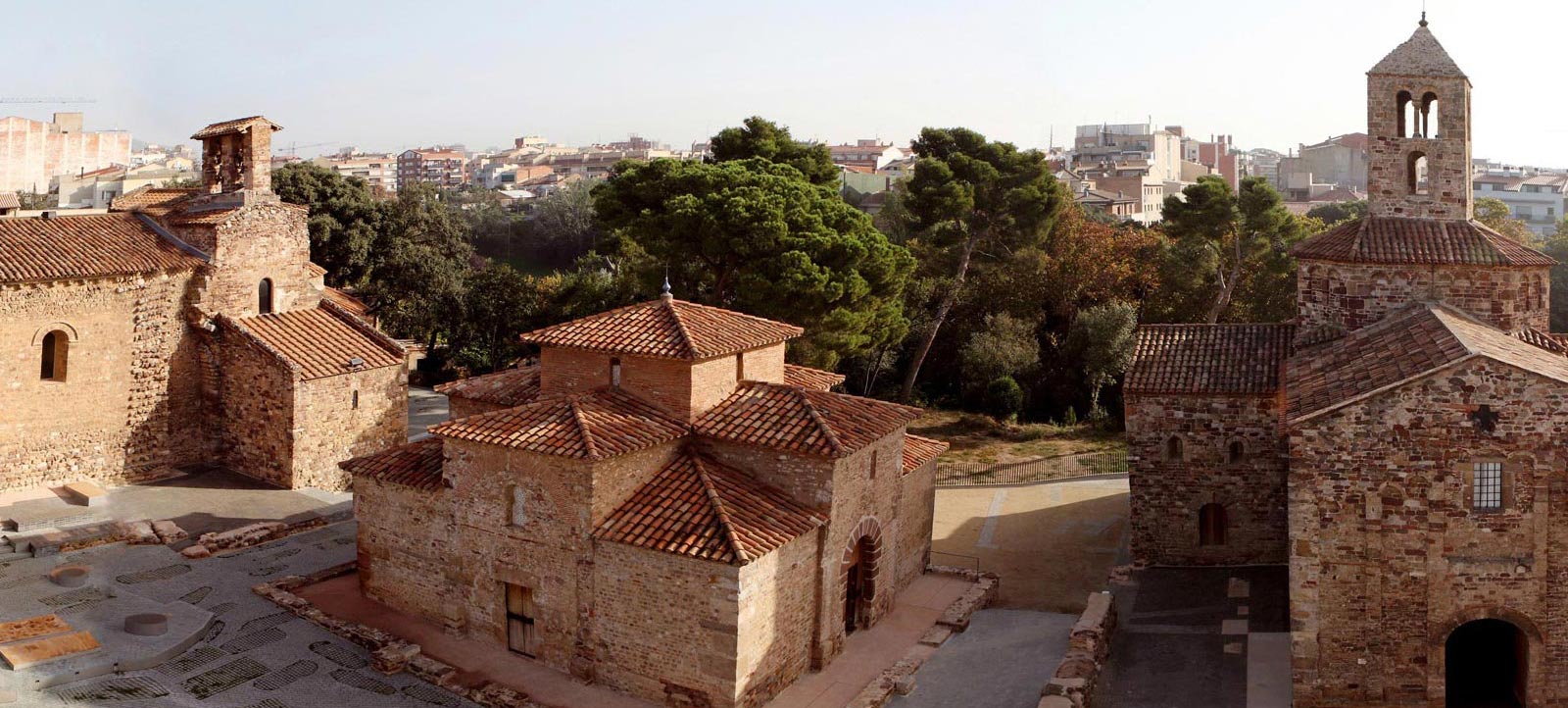

Proposals for inclusion on the World Heritage List must be based on the potential Outstanding Universal Value (OUV) of the property in question.
UNESCO defines Outstanding Universal Value as cultural and/or natural significance which is so exceptional as to transcend national boundaries and to be of common importance for present and future generations of all humanity.
The OUV justifying the candidacy of the See of Egara for the UNESCO World Heritage List is expressed in the following considerations:
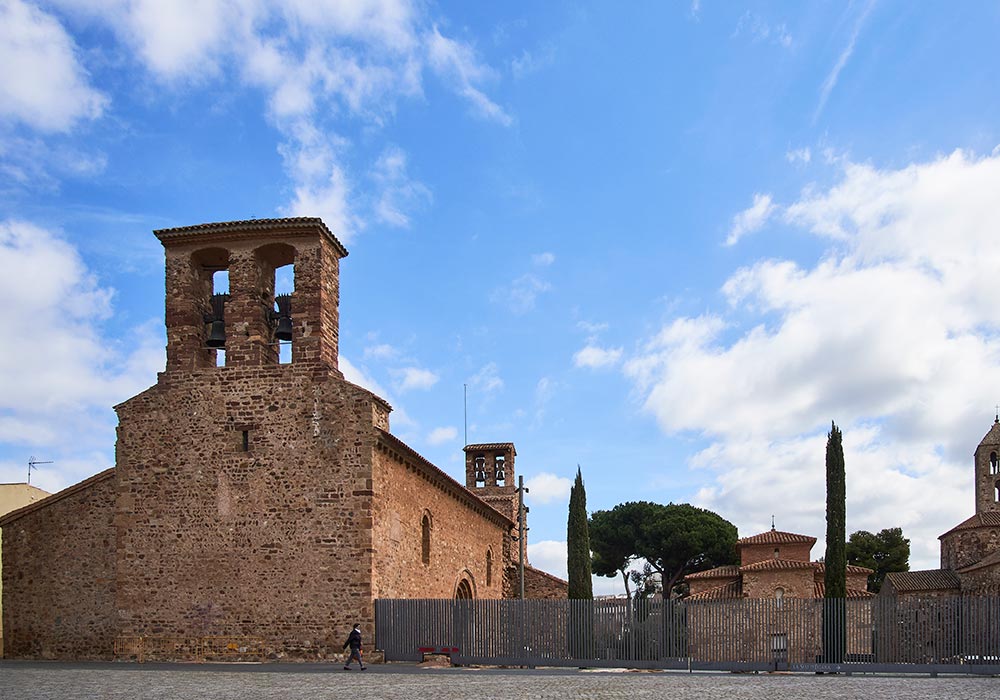
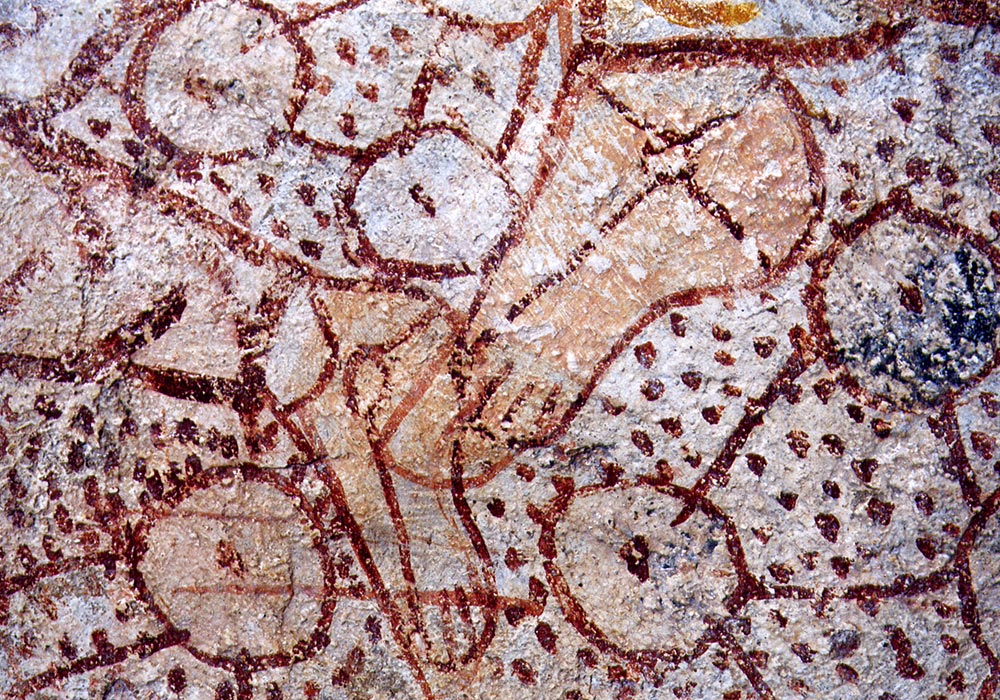
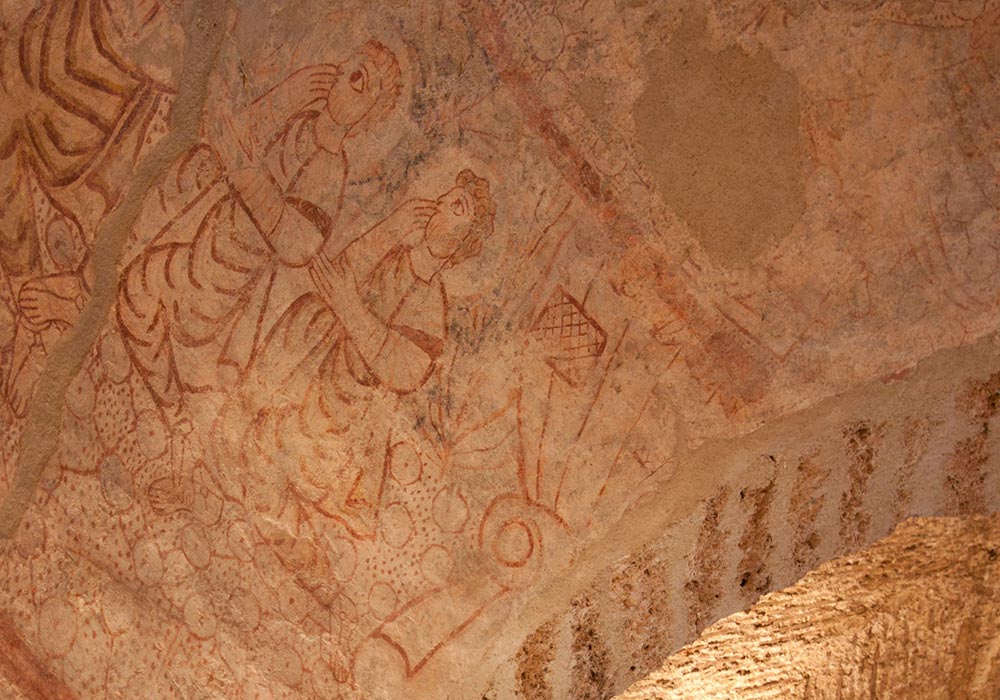
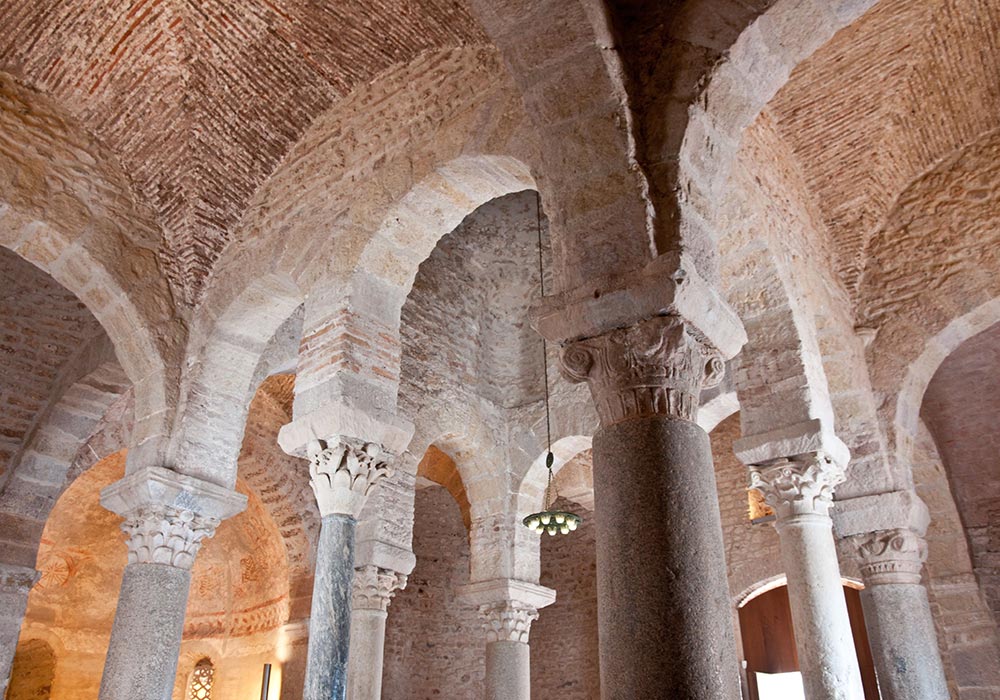
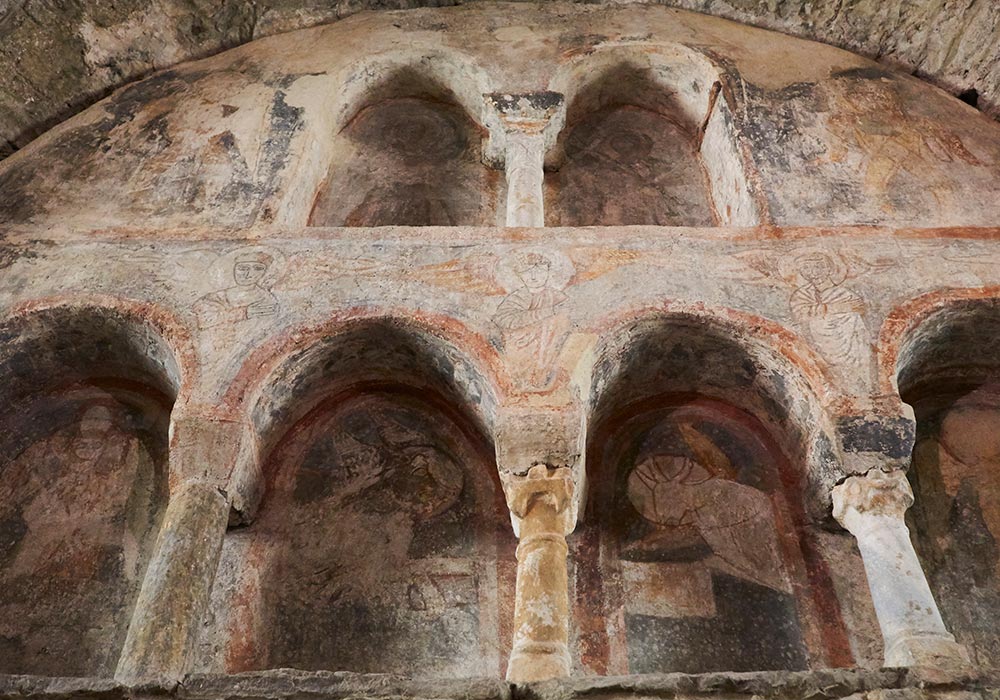
The authorship team believe that this candidacy proposal fulfils the following criteria:
The monumental complex of the Episcopal See of Egara and its pictorial decoration are a key element in the context of cultural transfer which occurred between the Western and Eastern Mediterranean in the 5th-7th centuries.
At this time, the Mediterranean coast of Hispania had a Hispano-Roman presence combined with the Visigoths (established in the Visigoth Kingdom of Toledo), and the Byzantines (very well established in the south of the Iberian Peninsula and the Balearic Islands since 552). In this context, there were numerous contacts and influences with North Africa, southern Gaul, the Italian peninsula, and the Mediterranean East (Palestine and Coptic Egypt).
The See of Egara is thus a vital monument in understanding the transfer of cultures which took place above all in the 6th century: the population of Hispano-Roman culture, the Visigothic people, and the Byzantine Empire.
Architectural innovations such as the heightened dome of St. Michael (a direct reference to Byzantine architectural forms), along with the artistic borrowings to be seen in the paintings from the Byzantine Orient and North Africa (mosaic of the rotunda of St George of Thessaloniki; paintings of the Monastery of Apollo at Bawit) serve to define the Egara complex as a unique and outstanding record of the cultural exchange which took place on the Iberian peninsula during this period.
In short, the architecture of the episcopal See and its paintings are the most palpable evidences of this legacy of contacts that took place in the 6th century in the Mediterranean framework. A singular example of a particular culture, the Christian culture of the 6th century, from which unfortunately only a series of Bibles produced in the East (Constantinople, Syria, Palestine) have survived, as well as partial decorative sets in Egypt (Chapel of Apollo El-Bawit, necropolis of Al-Baqawat).
The episcopal see of Egara and its pictorial decoration are a unique testimony of the encounter of two cultural traditions: the Hispano-Visigothic one and the Byzantine one.
On the one hand, from the first studies carried out by the architect and historian Josep Puig i Cadafalch there is a certain unanimity on the part of historiography in identifying in the architecture of the see of Egara and its pictorial decoration the trace of a primitive repertoire of Christian art very linked to the context of the Eastern Mediterranean of the sixth century.
In fact, certain iconographic particularities of the paintings (the Sant Miquel curtains, the Santa Maria zenith motif and the peacock feathers that it contains, the theme of the Ascension of Christ with the disciples listening to the master depicted in Sant Miquel paintings) refer us to the painting before the Byzantine iconoclasm, which took place between the 8th and 9th centuries, and which involved the destruction of many Christian images in the Eastern Mediterranean. Taking into account the links with the Byzantine repertoires that the paintings of the see show, Terrassa constitutes a fundamental document to knowing the artistic manifestations of the Christian culture of the 6th century. Since after the iconoclastic crisis of 726 in the East practically nothing survived due to the massive destruction of images. Very likely, in the future the paintings will be a key piece to interpret the artistic manifestations of the same period in the Byzantine Empire.
Although it is true that there are notable examples of Visigothic architecture in the Iberian peninsula (San Pedro de la Nave, San Juan de Baños, Santa María de Quintanilla de las Viñas), it is important to emphasize that there is no surviving mural painting of this period integrated into a monumental episcopal complex. For this reason, Terrassa is also a unique and exceptional manifestation of the art of the Hispanic-Visigothic people.
In the first place, it is the only ensemble among the ancient Episcopal sees (5th – 8th centuries) preserved in the West Mediterranean that maintains vestiges of its pictorial decoration. Valencia, Barcelona, Mérida, Aosta (Italy), Geneva (Switzerland), Porec (Croatia) and Grenoble (France) preserved important architectonic remains but not mural painting, thus conferring a great exceptionality to Terrassa as an example of the Christian painting of the 6th century in the first episcopal sees.
In second place, the pictorial decoration of the apses of the churches of Santa Maria and San Miguel are a documentary witness of the Christian painting of the 6th – 8th centuries, of which we know few examples due to the massive destruction of frescoes in the East in the context of the Byzantine iconoclasm. The prohibitions of the Iconoclastic crisis concerning the use of images explain the poverty of the pictorial decoration in the Mediterranean East for a long period of time, reason why the paintings of Terrassa are a missing link to knowing and interpreting the themes and the iconographic cycles of the painting of the same period made in the Byzantine Empire. The link that Terrassa set has with the Byzantine civilization is also evident in the field of architecture, since the complex built from the episcopal appointment around the year 450 can be considered as one of the first signs of the arrival to the Iberian peninsula of architectural solutions applied in the Eastern part of the Byzantine Empire. Consequently, the architectural ensemble of Egara is an exceptional example, in that it shows a fusion of Byzantine elements with other Latin ones in the period of Visigothic domination.
In third place, although there are many constructions and artistic manifestations that subsist from the Visigothic period, in most cases they are rural hermitages or temples of reduced dimensions and they in no case reach the monumentality of Terrassa. The great Visigothic cities such as Toledo, Mérida and Tarragona lost the constructions of the 6th century, so the architecture of the episcopal see of Egara and its pictorial decoration are key pieces to know what would be the possible architectural aspect of the great centers of Visigoth power. In fourth place, the mural altarpiece of the church of Sant Pere is undoubtedly one of the most unique elements of the set, especially for its design as a free-standing altarpiece, totally unusual and without comparable examples in all medieval art in Catalonia, Europe and the world. A unicum in the context of universal Christian art. Finally, the episcopal see of Egara is one of the few preserved ensembles in the world that allows us to understand and explain the use and evolution of architecture and the arts from antiquity to the present day, given the survival in the same space of vestiges and artistic elements from the Iberian period to the Gothic centuries.